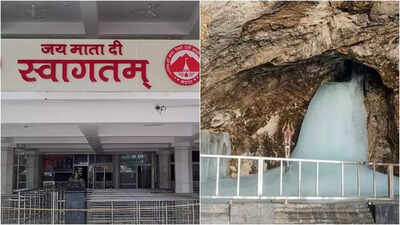ARTICLE AD BOX

NEW DELHI: In order to ensure humane treatment of working equines (horses, mules and donkeys) and prevention of disease risks during large-scale pilgrimages, the Centre has issued guidelines for the welfare of these animals and released a revised national action plan on glanders (a contagious and often fatal disease of equines), aimed at strengthening surveillance, prevention, control and eradication of the disease.The move is expected to ensure safety of pilgrims during pilgrimages such as the Amarnath Yatra (J&K), Char Dham Yatra (Uttarakhand), Vaishnodevi Yatra (J&K) and Manimahesh Yatra (Himachal Pradesh).These steps — guidelines and revised action plan on glanders — have been taken in the backdrop of reports of a number of deaths of equines every year during pilgrimages. Since glanders are zoonotic, preventing its spread in equines also protects human health.Though the guidelines, issued by the animal husbandry and dairying ministry, primarily apply to these yatras with immediate effect, states may extend them to other religious/tourism-related journeys involving equines.The guidelines provide a uniform framework for mandatory registration and tagging of all equines, health certification with compulsory testing for glanders and equine influenza, and a minimum acclimatisation of working equines engaged in carrying pilgrims and goods to high-altitude areas during the yatras.
It also prohibits night movement and makes insurance coverage for all working equines mandatory. There is also a provision of defined load limits for equines (80–90 kg for horses/mules, 50 kg for ponies and 25 kg for donkeys).Under the revised action plan on glanders, the ministry makes testing of equines in endemic and high-risk areas mandatory, supported by improved laboratory diagnostics and regular field inspections.The plan strengthens surveillance, diagnostic capacity, response measures and stakeholder engagement, incorporating recent experiences and scientific inputs to make the programme more robust and effective.



.png)
.png)
.png)
















 3 hours ago
2
3 hours ago
2









 English (US) ·
English (US) ·